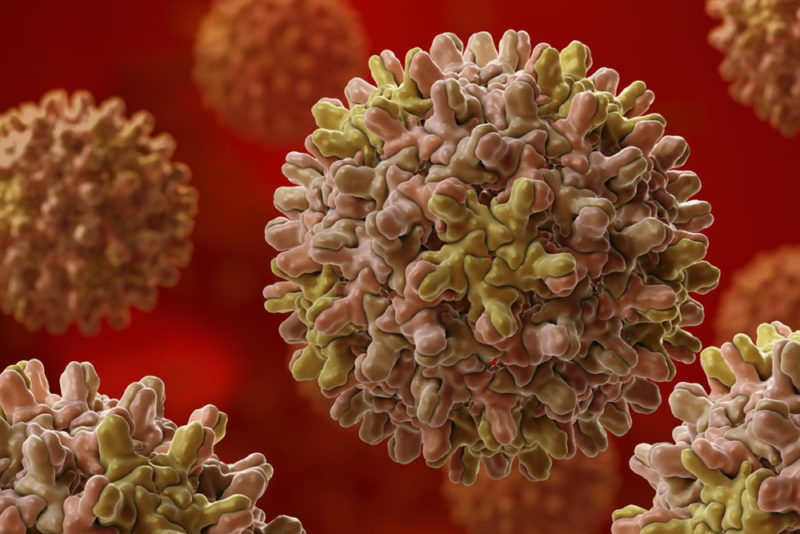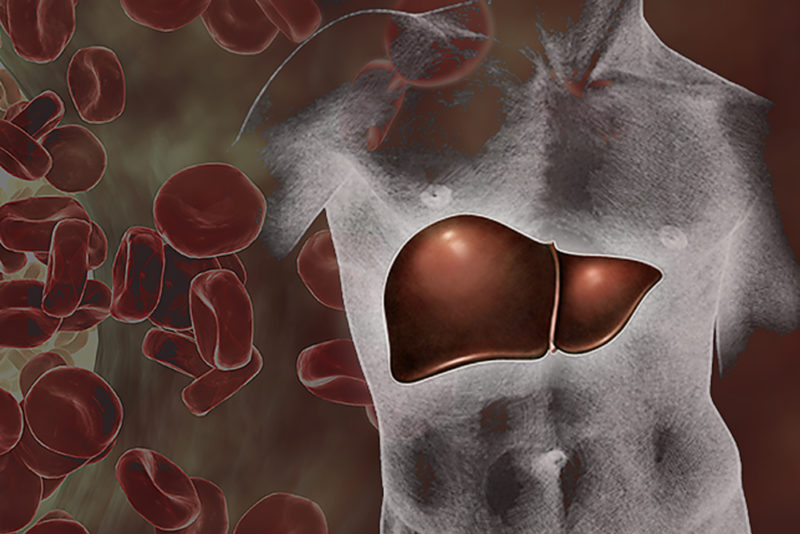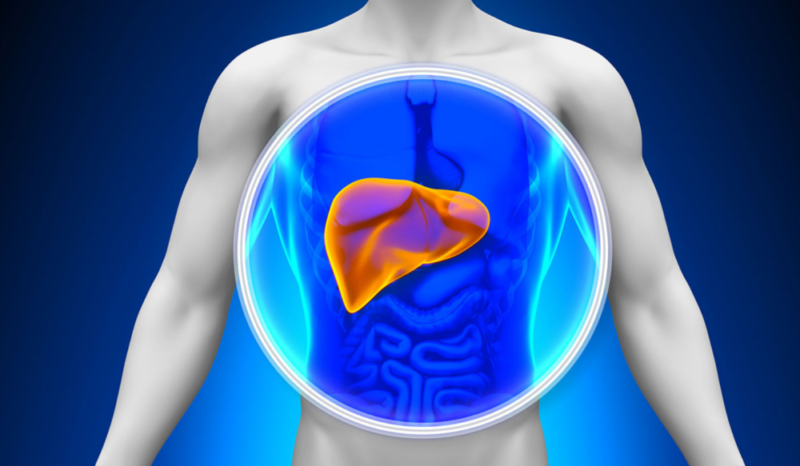Viral hepatitis is a fairly common disease, many varieties of which pose a mortal danger to the patient. To avoid the serious consequences of the disease, it is important for every person to know about the transmission of this infection, its symptoms and prevention. Read more about this in our article.
Material Content:
What is viral hepatitis
Viral hepatitis (virus hepatitis) is an inflammation of the liver tissue caused by a virus. In another way, diseases belonging to the group of hepatitis are called "jaundice", since quite often, against the background of pathology, the patient's skin and mucous membranes acquire a yellowish tint. This phenomenon is explained by an increase in the level of bilirubin in the blood and tissues.
Types of disease
Viral hepatitis is classified depending on the type of pathogen. In the medical literature, the names of the viruses that cause this disease are often indicated by the abbreviation of the letters of the Latin alphabet.
Based on the name of the pathogen, the following types of hepatitis are distinguished:
- A (Botkin's disease);
- B (serum hepatitis);
- FROM;
- D (delta hepatitis);
- E;
- F;
- G.
Researchers claim that there are other hepatitis viruses that are currently not well understood. In addition, herpes viruses, rubella, Lassa fever and others can also become a cause of the disease.
According to the characteristics of the course, hepatitis is distinguished:
- Lightning fast or fulminant. It is characterized by a fast-flowing inflammatory-necrotic process and an extremely serious condition of the patient. May develop due to infection with hepatitis A, B and D. viruses.
- Acute.As a rule, the pathology has pronounced symptoms, and the virus itself has occurred relatively recently.
- Chronic. Sluggish, developed a long time ago. Symptoms are mild and nonspecific.
The most dangerous fulminant form of hepatitis, since only 1-2 weeks after its first manifestations, in the absence of medical care, the patient develops a hepatic coma.
Reasons and ways of transmission
The cause of viral hepatitis is the ingestion of the corresponding type of virus into the body and its further reproduction.
Ways of infection depend on the specific type of pathogen:
- hepatitis A, E, F - fecal-oral (through drinking water, with unwashed fruits, through dirty hands), contact-household (when using common dishes, etc.);
- hepatitis B, C, D, G: parenteral (during manicure, pedicure, tattooing, medical procedures involving damage to the skin), genital, transplacental (from mother to baby during pregnancy), possibly contact household.
It is worth noting that the hepatitis D virus has a defect, due to which it is unable to independently form a protein, therefore, infection with it is possible only if hepatitis B virus is present in the body. The combination of two types of pathogens significantly worsens the patient's condition and prognosis.
The clinical course of the disease
The clinical manifestations of the pathology depend on the specific type of pathogen, however, for many types of hepatitis, the following symptoms are characteristic:
- fatigue;
- malaise;
- dyspeptic disorders;
- sleep disturbances;
- heaviness or pain in the right hypochondrium;
- yellowing of the skin and mucous membranes (there are also anicteric forms of the disease);
- violation of the stool;
- dark urine;
- discoloration of feces.
With hepatitis A, a fever develops and other symptoms of intoxication are observed.
Depending on the variety of pathology and individual characteristics, certain signs of the disease may be absent.
The most insidious species is chronic viral hepatitis C, which doctors often call a "gentle killer." Over the years, without giving pronounced symptoms, the disease progresses, leading to cirrhosis and malignant neoplasms in the liver.
Diagnostic Methods
The main way to diagnose hepatitis is to analyze blood serum for the presence of RNA of the pathogen, antigens and antibodies to a specific type of virus (enzyme-linked immunosorbent assay, polymerase chain reaction).
Additionally, the following methods of medical research are prescribed:
- general and biochemical analysis of blood (in case of a disease there will be an increased level of bilirubin, high activity of liver enzymes);
- Ultrasound of the abdominal cavity to assess the condition of the liver and other internal organs;
- puncture liver biopsy in order to determine the degree of damage to organ tissues, the choice of treatment tactics and evaluation of the effectiveness of the therapy
In hepatitis A, feces may be analyzed. A liver biopsy with this type of disease is impractical.
Treatment principles
For all types of viral hepatitis, it is necessary to follow a diet that excludes fatty, fried, spicy and other foods that are heavy for the digestive system, and also implies an increase in fiber intake (table No. 5). Alcohol is prohibited.
The main drugs in the treatment of viral hepatitis are interferons. These funds contribute to the activation of the body's immune forces to combat the pathogen. The exception is hepatitis A, from which in most cases the body can be cured on its own within a few days, without the use of immunostimulants. In some cases, without medical intervention, viral hepatitis B is self-healing, rarely C.
The following groups of drugs are used as additional therapy:
- antispasmodics (drotaverinum);
- detoxification solutions;
- digestive enzymes (pancreatin);
- choleretic (Holosas);
- ursodeoxycholic acid preparations for the prevention of bile production disorders;
- hormonal drugs to prevent complications and reduce the activity of the pathological process (Prednisolone);
- sorbents for removing toxins from the body (Polyphepam);
- vitamin preparations.
Depending on the severity of the patient's condition, viral hepatitis therapy can be performed both on an outpatient basis and in a hospital setting (in the infectious ward, and in especially severe cases, in the intensive care unit).
Complications of viral hepatitis
The probability of negative consequences depends on the type of virus. The prognosis for hepatitis A is most favorable, since this disease does not go into a chronic form and rarely gives complications, which mainly include inflammation of the gallbladder and ducts. After the infection, a persistent lifelong immunity is acquired.
With timely access to a specialist and adequate treatment, viral hepatitis gives complications in relatively rare cases.
However, diseases of this group can have the following negative consequences:
- B, D - acute liver failure, hepatic coma;
- C - cirrhosis, liver cancer;
- E - renal and hepatic insufficiency, hepatic coma;
- F - inflammation of the gallbladder and ducts, liver failure, hepatic coma;
- G - inflammation of the gallbladder, biliary tract, rarely - acute liver failure.
In addition, any type of viral hepatitis can be complicated by an adherent bacterial infection. The prognosis is significantly worsened if infection occurs immediately with two types of pathogen. The most common combination of hepatitis B with hepatitis D and C.
Life expectancy with disease
Uncomplicated acute viral hepatitis with timely detection is successfully treated and does not affect the patient's life expectancy. In the case of a transition to a chronic form (which is most often observed with hepatitis C virus infection), the disease can progress, leading to such serious liver pathologies as cirrhosis, cancer, and liver failure. In this case, the life expectancy from the moment the virus enters the body can range from several years to several tens, depending on the presence of concomitant diseases, individual characteristics of the body and the severity of hepatitis.
Preventative measures
At the moment, the main way to prevent hepatitis A, B and D is vaccination. For other varieties of the disease, specific preventive measures do not exist.
In order not to become infected with viral hepatitis A, E and F, you must:
- avoid drinking low quality drinking water;
- thoroughly wash the fruits before eating;
- observe the rules of personal hygiene;
- avoid travel to areas with an unfavorable epidemiological situation for hepatitis (countries of Asia, Africa).
For hepatitis B, C, D and G, the following recommendations should be observed as an individual non-specific prophylaxis:
- Do not carry out medical manipulations in questionable private clinics;
- control the sterilization of the instrument by the master before applying the tattoo, piercing, manicure, pedicure;
- avoid random sexual intercourse, use a condom;
- avoid intravenous drug use.
Also, the prevention of viral hepatitis involves the use of individual personal hygiene items and the limitation of contact with patients.
Given the danger and epidemiology of the diseases considered, it is important to consult a doctor as soon as alarming symptoms appear. Early detection and timely treatment significantly increases the chances of recovery, even in the case of severe hepatitis.



















